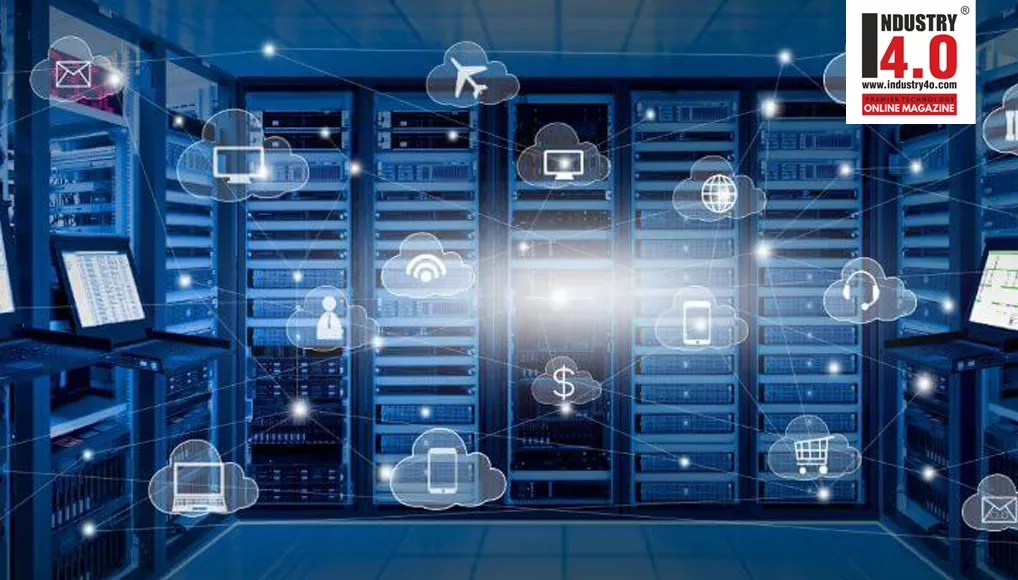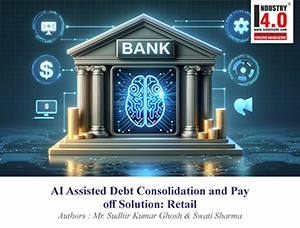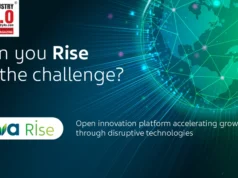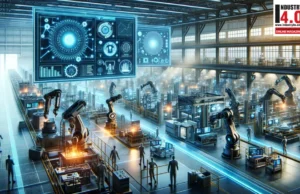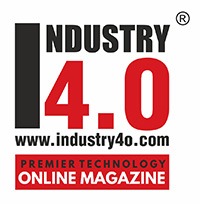Mainframe Modernization: The hum is only getting louder!
Mainframe computers are large, powerful, and highly reliable computing systems primarily used by large organizations for high-volume transaction processing, data storage, and mission-critical applications. They have been a backbone of enterprise IT since the 1950s.
 While the tech story is abuzz with modernization, and everyone seems to be skirting towards the start or finish line, depending on the business they are in, mainframe as the good humble machines are on the bandwagon too!
While the tech story is abuzz with modernization, and everyone seems to be skirting towards the start or finish line, depending on the business they are in, mainframe as the good humble machines are on the bandwagon too!
After 60 years, mainframe computers are more essential than ever. They help unlock the full potential of AI-driven digital transformation, accelerate ROI, and enable business innovation and growth
Modernization Isn’t Optional Anymore – Here’s Why
Mainframe Modernization involves evolving the current system to better meet modern business needs. This can mean refactoring, rehosting, or integrating mainframe applications with cloud-based platforms and microservices. The aim is to preserve the strengths of mainframes while improving agility and reducing operational complexities.
The mainframe itself isn’t really the issue. It’s everything around it that’s grown outdated. Today’s banking and enterprise world runs at a very different speed — and legacy systems just weren’t built to keep up with mobile, cloud, or the pressure to launch new services in weeks, not years.
That’s when things start breaking down. Not the core systems themselves – but how everything else connects to them.
What are companies up against?
✦ Maintenance bills that keep piling up
✦ Use outdated languages (like COBOL, PL/I)- Fewer developers who still understand COBOL or assembler
✦ Headaches when trying to plug old systems into new platforms
✦ Real risk when it comes to regulatory or security gaps
✦ Struggle to integrate with cloud-native or API-driven services
“Modernization in less time, at lower cost is a poster roadmap”. Application modernization can be slow-going and risky, especially for banks and governments that provide mission-critical services. Large applications have interdependent features that have been repeatedly updated over the years. Disentangling them into stand-alone services can be complex and time-consuming.
How Teams Are Tackling It
There’s no one-size-fits-all fix here. What works for a mid-sized bank won’t always work for a global financial services firm. Still, there are a few common routes teams are taking to bring their systems into the future:
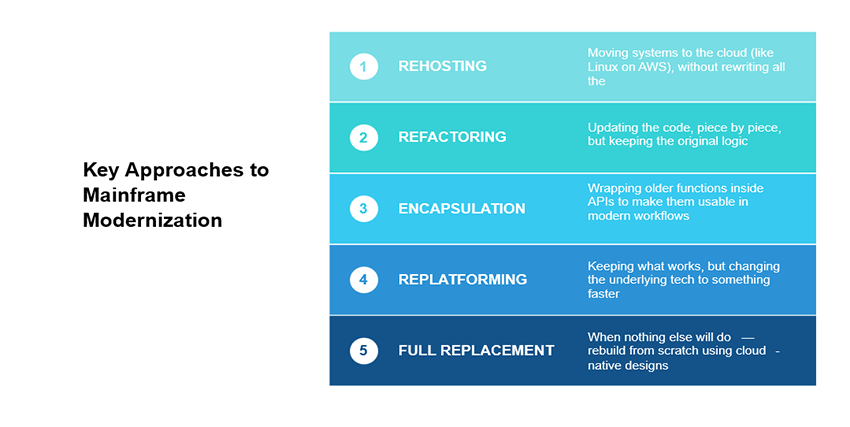
Mainframe Modernization helps you migrate your mainframe workloads to cloud -managed environments. It provides a rich set of tools and resources, to help customers plan, migrate and modernize applications and workloads. With this service, you can evaluate your current applications or develop and enhance them with COBOL or PL/I and establish an automated CI/CD pipeline for rapid deployment.
You have the choice depending on your client need: Automated refactoring or replatforming Everything can be pressed under break glass. Mainframe Modernization prepares you to act at every stage of the journey—from assessment and planning to post-migration services in the cloud.
Every path has tradeoffs. But doing nothing? That’s the riskiest strategy of all.
AI Technologies Transforming Mainframe Modernization
Generative AI: Dealing with old systems can be messy — especially when there’s little documentation to rely on. That’s where generative AI has been a big help. By digging through historical code, it helps teams make sense of what’s still running behind the curtain.
Agentic AI Agents: The latest AI tools feel less like software and more like teammates. They scan complex systems, flag potential issues, and even suggest smart fixes — the kind you’d expect from a seasoned engineer.
Machine & Deep Learning: And when it comes to automation, machine learning steps in to handle the dull stuff — like code conversion or running the same checks over and over. Pair that with good security practices, and you get quicker launches and more stable systems without burning out your team.
Business Processes to Keep on Mainframes
Everyone’s talking about moving everything to the cloud or going fully digital, but let’s be real mainframes still have their place. In some cases, they’re the smarter choice.
Financial Transactions and Security: Handling tons of transactions or sensitive data? Mainframes are built for that. Secure, stable, proven.
Legacy Systems with Proven Scalability: Many banks and insurers run decades-old systems that still work great. Swapping them out? Costly and risky.
Mission-Critical Applications: Healthcare, governments and some systems must run 24/7. Mainframes don’t just survive pressure, they thrive under it
“Automation is the most important thing you can do to get the most out of your mainframe”
Automate the scheduling of jobs, the administration of systems, the compliance with security, and the deployment of software. Lower costs of doing business, make fewer mistakes, and respond more quickly to changes in the market. Combine mainframe and cloud data to create data pipelines that give you real-time insights.
Important, high-volume, secure business operations still require mainframes. Automation and strategic modernization maximize mainframe benefits without jeopardizing business continuity. Recognize mainframes as crucial, dynamic.
Why Modernization Really Matters
When people hear “mainframe modernization,” they usually think it’s just a tech upgrade. But it’s more than that. It affects how fast a company can deliver new ideas, how easy it is to find the right talent, how secure everything is, and how much all of it ends up costing.
Here’s what it really enables:
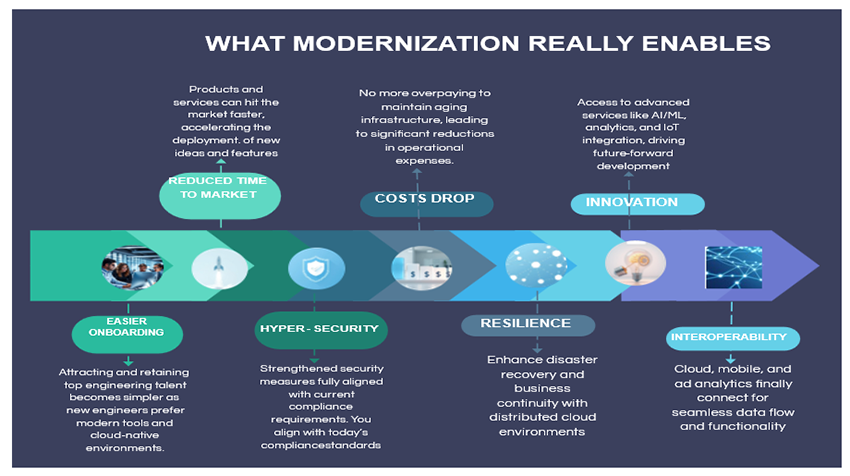
In short, this isn’t about staying current. It’s about staying competitive.
What the Process Really Looks Like
Modernization doesn’t happen overnight. The organizations that succeed treat it like an ongoing journey — not a one-off upgrade.
Here’s how most of them go about it:

A Final Thought
Let’s be clear — mainframes aren’t going anywhere. And honestly, they shouldn’t. They’ve earned their place by being rock-solid for decades.
But in their current state? They’re no longer enough.
Modernizing them isn’t about replacing what works. It’s about making sure what works can help you move forward — instead of holding you back.
If we wait, we risk falling behind. If we act now, we give ourselves the tools to lead.
About the Author :
 Ms. Swati Sharma
Ms. Swati Sharma
Senior Industry Consultant – Financial Market,
IBM
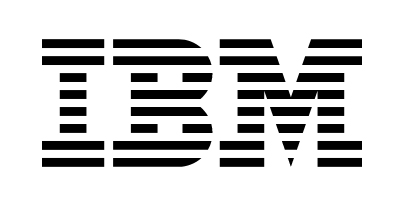
Ms. Swati Sharma with over 11 years of experience at the nexus of capital markets, asset management & investment banking, this seasoned senior industry consultant provides strategic advice, technology-driven transformation & regulatory alignment to top international financial institutions.
Ms. Swati Sharma has lead the front-to-back digital transformation of investment banking, securities trading, clearing, settlement & portfolio management platforms.
Ms. Swati Sharma’s area of expertise is capital markets technology modernization.
Ms. Swati Sharma areas of expertise include risk frameworks, regulatory compliance, and using AI, cloud-native architectures, and advanced analytics to streamline processes and open up new revenue streams.
Ms. Swati Sharma is working with investment banks, asset managers, custodians, and fintech companies.
Ms. Swati Sharma assist businesses in future-proofing their business models by striking a balance between client expectations, regulatory requirements and new market opportunities.
Ms. Swati Sharma is Accorded with the following Honors & Awards :
https://www.linkedin.com/in/sw
Ms. Swati Sharma can be contacted at:
Also read Ms. Swati Sharma‘s earlier article:

